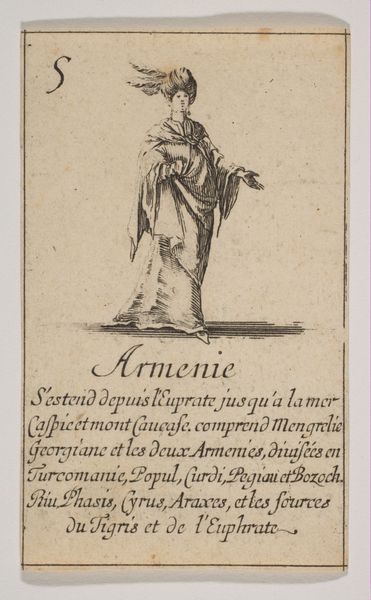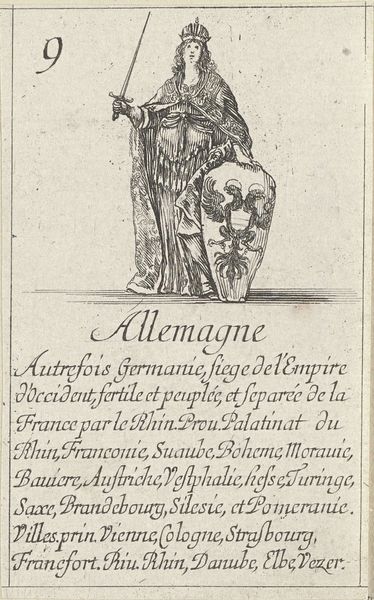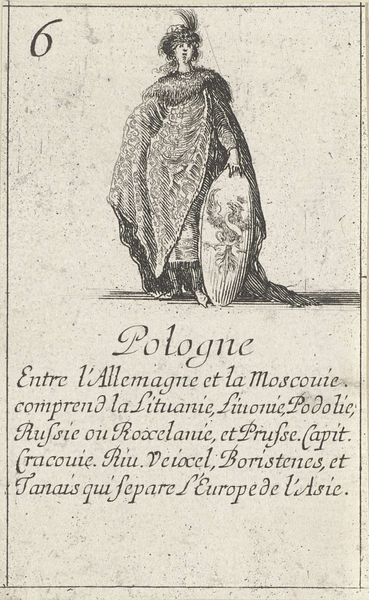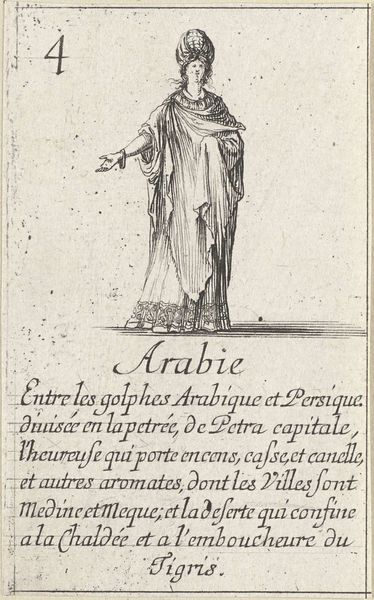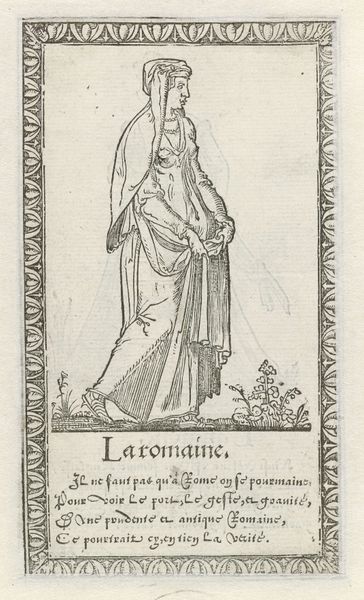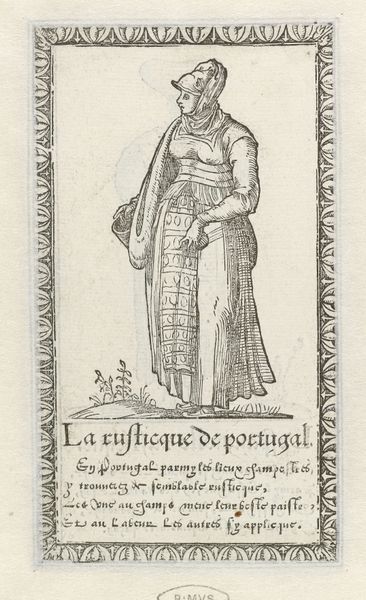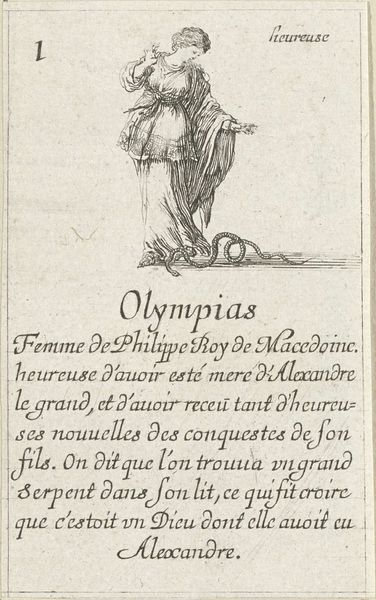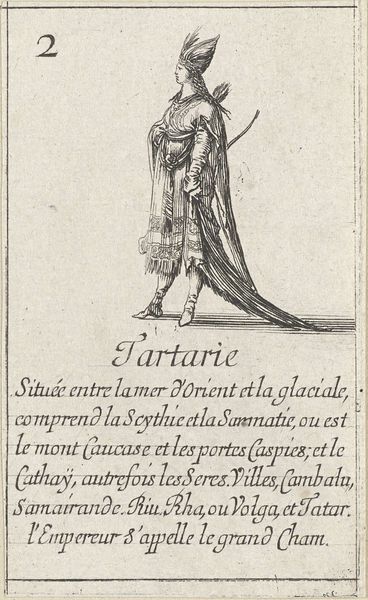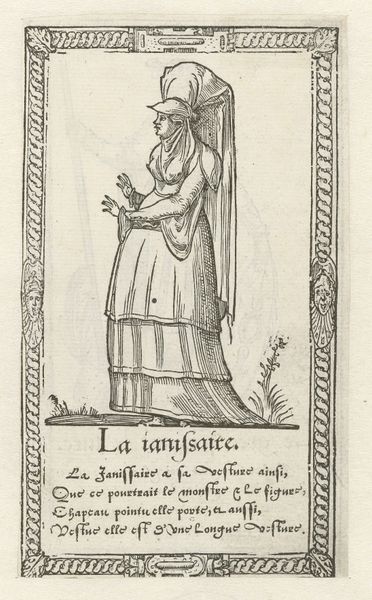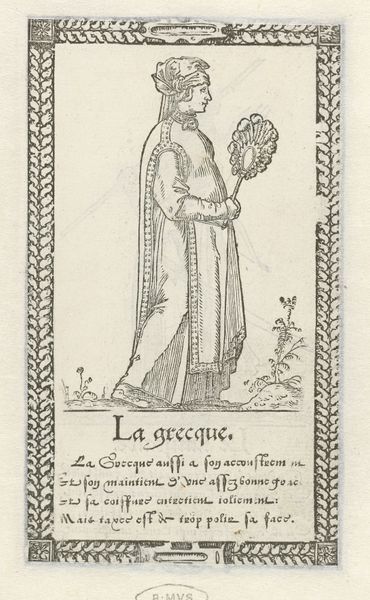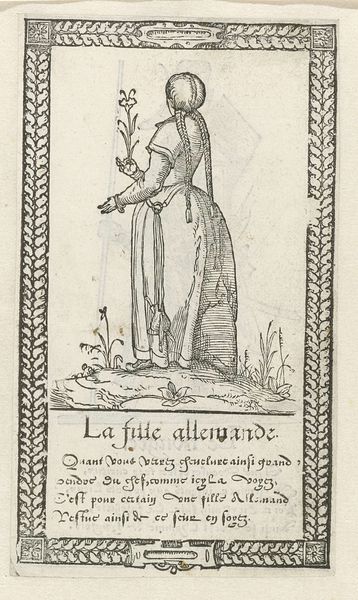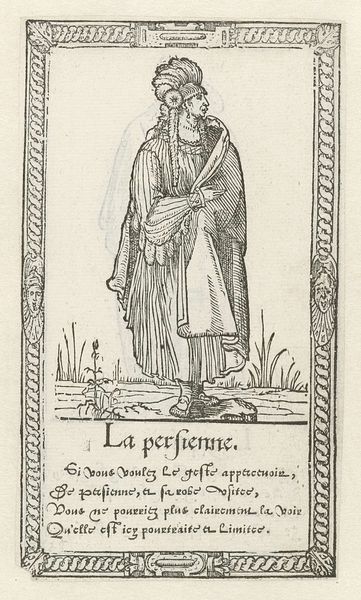
print, engraving
#
portrait
# print
#
figuration
#
islamic-art
#
engraving
Dimensions: height 89 mm, width 55 mm
Copyright: Rijks Museum: Open Domain
Curator: Stefano della Bella created this print, "Vrouw uit Armenië," sometime between 1620 and 1664. It resides here at the Rijksmuseum. Editor: My first impression is one of controlled elegance, yet there's an unsettling gaze, a presentation of something more complex than pure aesthetic. The crisp engraving amplifies that feeling, doesn't it? Curator: Indeed. Let’s delve into the engraving process itself. The labor involved in creating such fine lines would be significant, think about the artist meticulously etching the copperplate, working and reworking to achieve this level of detail. Editor: Agreed, and all to transmit cultural data. I am curious about the symbols woven into her clothing and headdress. What do they communicate about her status and Armenian identity? The inclusion of the headdress speaks volumes, towering with those feathers, demanding attention, setting her apart. Curator: Certainly the garment indicates the influence of the trade and manufacturing occurring within Europe and how this Armenian image may function as a kind of ethnographic record produced for European consumption. It also speaks to class and access within Armenian society during the time. Editor: Note also her pose, almost inviting, her right hand extended as if to present...what exactly? Her left clutches the fabric of her gown, and that itself suggests constraint, doesn't it? A sort of veiled narrative between power and presentation. It hints at the complex dynamics within Armenian society in how they negotiate the visibility to others, of their own tradition. Curator: The act of dissemination and viewership really changes the object too; how are people understanding labor and status looking at her from entirely different context and what stories might arise. Editor: Absolutely. These details ripple outward into social context. Stefano Della Bella, through his print, prompts us to consider the intersections of identity, material culture, and labor. It’s about how symbols of difference are carefully mediated to carry social meaning, after all. Curator: Precisely, and through analyzing this piece, it shows that these factors affect production. From the engraving on the plate to dissemination across a broader context, these are social and political in addition to the aesthetic consideration we often see attributed to prints.
Comments
No comments
Be the first to comment and join the conversation on the ultimate creative platform.
